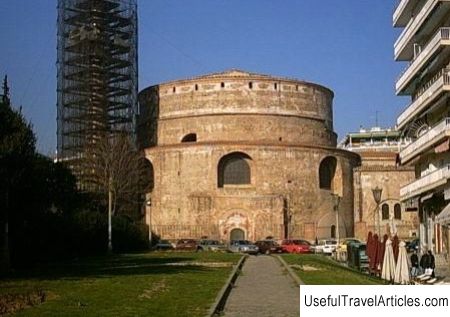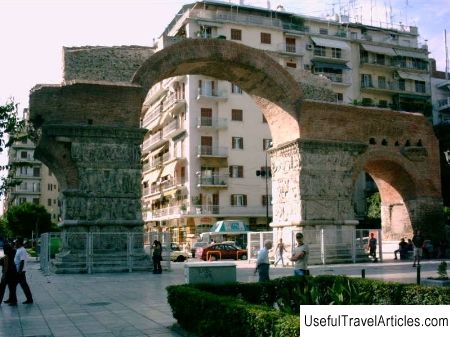Rotonda description and photos - Greece: Thessaloniki
Rating: 7,8/10 (1232 votes) 
Rotonda description and photos - Greece: Thessaloniki. Detailed information about the attraction. Description, photographs and a map showing the nearest significant objects. The name in English is Rotonda. Photo & DescriptionThe famous Rotunda of Thessaloniki, also known as the Rotunda of Saint George, is one of the city's most interesting landmarks, as well as an important historical and architectural monument. The Rotunda was built at the beginning of the 4th century and was part of a huge palace complex (which also included the famous Arch of Galerius, located just 125 m from the Rotunda), built by the order of the Roman Emperor Galerius. It is believed that that the Rotunda was planned as the mausoleum of Emperor Galerius, but was never used for its intended purpose. True, there is a version that the building was part of a palace complex for official receptions, but it is quite possible that it was originally planned as a temple. Historians never came to a consensus. Presumably, in the first half of the 4th century, the building was converted into a Christian temple and was used as such until 1591, when Thessaloniki fell under the rule of the Turks, who turned the Rotunda, like most of the Christian shrines, into a mosque. Christians returned their shrine only in 1912, after the liberation of Thessaloniki, and the Museum of Christian Art was located within its walls. In 1988, along with other early Christian and Byzantine monuments of Thessaloniki, the Rotunda was declared a UNESCO World Heritage Site. Today, services in the Rotunda are held only on great holidays. The original building of the Rotunda was a cylindrical structure with massive, more than 6 m thick, walls with arched niches-chambers and a huge dome with an oculus (in the image and likeness of the dome of the Pantheon in Rome). In the late 4th - early 5th century, a number of significant changes were made to the architectural appearance of the building. For example, a nave was added in the western part, and an apse appeared from the southeastern part. The main entrance was moved to the western part of the Rotunda. During the same period, the interior of the building was decorated with beautiful mosaics, some of which have survived to this day, and during the Turkish rule, a minaret was added to the building, which you can also see today.      We also recommend reading Hotel ”Volga” description and photo - Russia - Volga region: Saratov Topic: Rotonda description and photos - Greece: Thessaloniki. |




